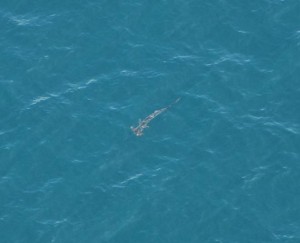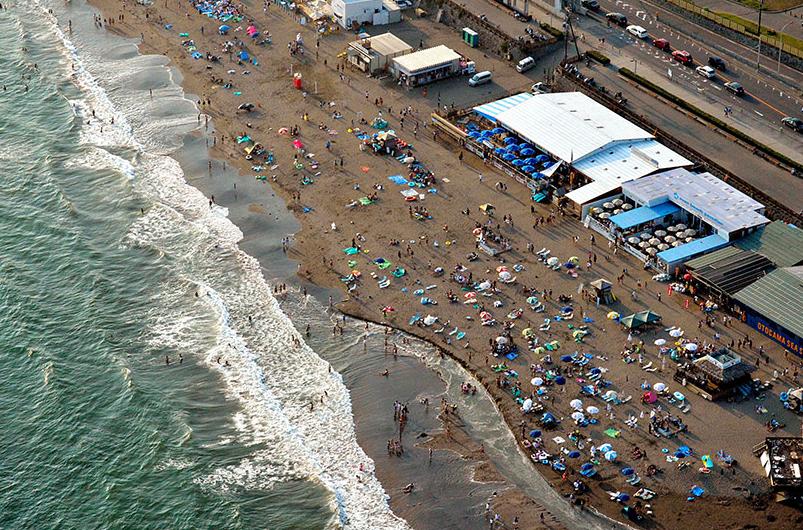
In the latest sighting, two hammerheads were spotted on Wednesday about 50 meters off the Torami coast in Chiba, Fuji TV reported.
Just when you thought it was safe to go back in the water …
That famous tagline from the movie “Jaws 2” was echoing across many coastal areas of the Kanto region as authorities closed beaches to swimming following a flurry of shark sightings.
Chigasaki and five neighboring municipalities banned swimming at nine beaches in their jurisdictions on Aug. 14 immediately after the Kanagawa prefectural police confirmed numerous shark sightings.
A police helicopter spotted seven hammerhead sharks about 1.2 kilometers off the coast of Chigasaki, and a school of more than 30 sharks in the vicinity. The helicopter was dispatched after a man on a Jet Ski alerted police to the presence of sharks near a rock reef known as Eboshi-iwa around midday on Aug. 14.
The number of sightings has been rising in the Kanto region since the beginning of this month.
In Ibaraki Prefecture, prefectural officials confirmed the presence of a shark measuring 4 meters off Hokota on Aug. 5.
Local governments erected nets around designated swimming areas to prevent sharks from entering after 16 sharks were sighted two days later.
In Shizuoka Prefecture, two hammerhead sharks were spotted 1.5 kilometers to 2 kilometers off Yaizu on Aug. 9.
On Aug. 12, a surfer reported on a shark in coastal waters of Ichinomiya, Chiba Prefecture.
More than 100 species of sharks exist in waters close to Japan, including predators, such as the great white shark, which featured in the movie “Jaws,” and tiger and bull sharks.
However, those three fearsome specimens are not common, experts say.
The hammerhead shark, known for its T-shaped head, is often sighted. Although it is not as threatening as a great white, its sheer size of up to 4-5 meters long can be menacing.
Takashi Sugino, an official with Tokyo Sea Life Park, urges vigilance against sharks.
“Any kind of sharks quickly responds to the smell of blood and could attack people,” he said. “People should not let their guard down.”
Keiichi Sato, a senior researcher with Okinawa Churashima Research Center’s marine biology division, was not surprised by the latest shark sightings.
He said hammerhead sharks and sandbar sharks, which usually live in southern waters, migrate northward near to Japan’s mainland as they follow schools of fish on which they prey during summer when the water temperature rises.
(This article was written by Tamotsu Sugao and Noboru Okada.)



















